Top speed 2,122 km/h Length 12 m | Wingspan 6.2 m First flight March 7, 1964 | |
 | ||
Manufacturer Egyptian General Aero Organisation | ||
The Helwan HA-300 (Arabic: حلوان ٣٠٠) was a single-engine, delta-wing, light supersonic Interceptor aircraft developed in Egypt during the 1960s. It was designed by the famous German aircraft designer Willy Messerschmitt.
Contents
- Origin
- HA 300
- E 300 Engine
- Termination
- Aircraft on display
- Specifications HA 300 with Orpheus 703 engine
- References
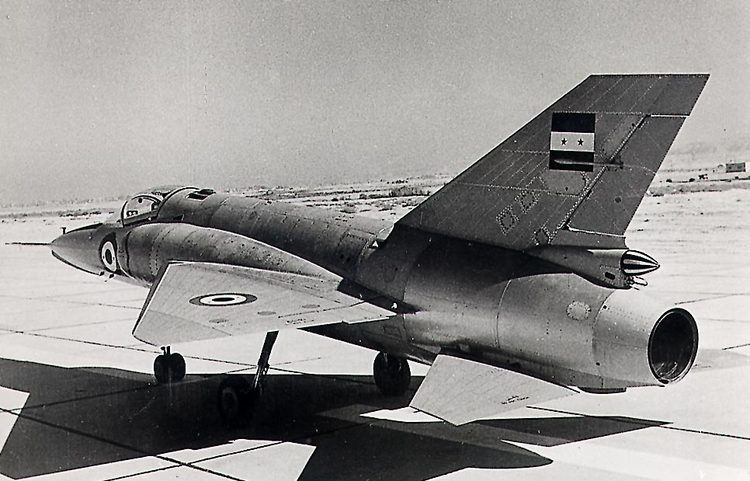
At various stages, Spain and India were involved in the development program. Spain agreed to finance two projects, the HA-200 and the HA-300, but cancelled financing the HA-300 project when it was just on paper due to cost and time overruns. Egypt then financed it, and the program was transferred to Egypt where every part, including the engine, was made, and the aircraft was successfully flown.
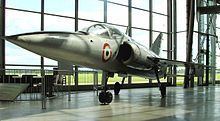
At a late stage India financed the Egyptian development of the Egyptian E-300 engine for use on the Indian fighter jet HF-24 Marut.

The HA-300 was an ambitious and costly project for Egypt, at the time seeking to expand both its civilian and defense aviation industry.
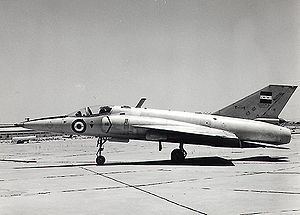
There were 6 planes in service built before termination of the project in 1969. The first prototype was museum exhibits as of 1997.
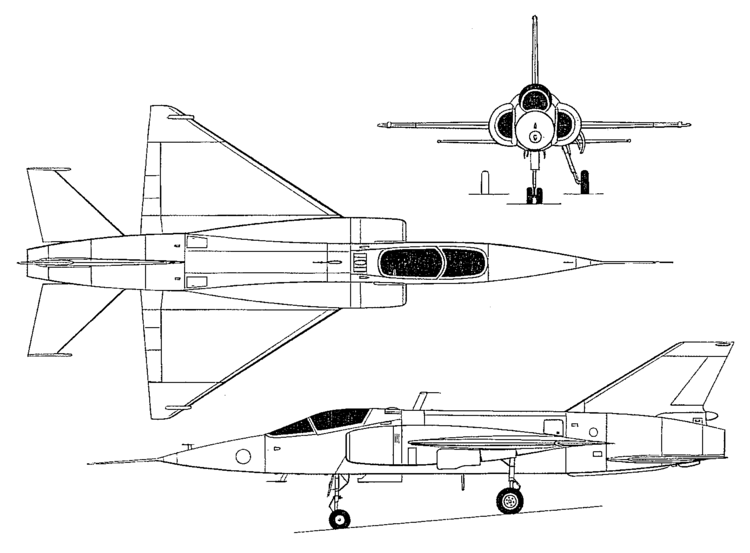
Origin
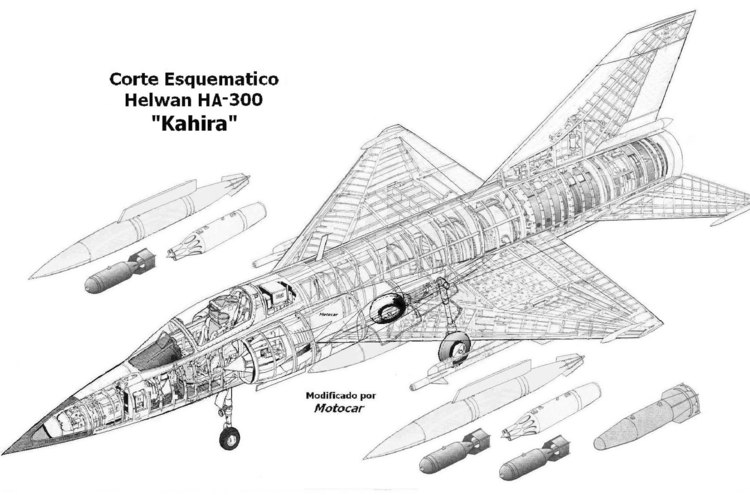
After World War II, Willy Messerschmitt was prohibited as a German citizen from undertaking any further research or development related to the German military, including the manufacture of aircraft, until 1955. He therefore moved to Spain where he joined Hispano Aviación and started designing an ultralight fighter aircraft in 1951. The development was very slow and Messerschmitt was able to build only a delta-shaped plywood glider without a tail. Towed by a CASA 2.111, the test flight for the glider was not completed due to instability and the airplane did not become airborne. Due to funding problems and the resultant long development time, Spain abandoned the project in 1960.
Egypt then acquired the design. The design team, headed by Messerschmitt, moved to Helwan, Egypt, to continue its work on the HA-300, which now stood for Helwan Aircraft 300. Ferdinand Brandner, an Austrian jet engine expert, was also invited to develop a turbojet for the new fighter. Egypt aimed to produce a lightweight supersonic, single-seat fighter that could join the Egyptian Air Force as an interceptor.
HA-300
Development of the Egyptian HA-300 started in the test facilities and workshops in Factory No. 36 in Helwan, southeast of Cairo, under the supervision of the Egyptian General Aero Organisation (EGAO); officially the program started in 1959.
The first prototype of the HA-300, powered by a 2,200 kgp Orpheus Mk 703-S-10, first flew on 7 March 1964, and achieved Mach 1.13. Egypt sent two Egyptian pilots to India in 1964 to prepare for the HA-300 flight development. It was followed by a second Orpheus-powered prototype which first flew on 22 July 1965. The third and last prototype was fitted with the Egyptian E-300 engine, which it was hoped would make it capable of attaining 12,000 m and Mach 2.0 within 2.5 min after takeoff. This prototype was flight-tested at least once when it achieved a speed of Mach 2.1 with the Egyptian Brandner E-300 engine.
A total of 135 million Egyptian pounds was spent on the development, and the E-300 engine was given to the Indian government for use in the HF-24 Marut fighter.
E-300 Engine
The HA-300 was originally designed for the afterburning Orpheus BOR 12 turbojet, but the engine did not achieve the minimum level of success Egypt required in the fighter jet. President Nasser saw from the beginning a major threat to national security by depending on a British engine, because of the hostility that time between Egypt and Great Britain after the 1956 Suez crisis.
The fighter jet was then modified for the Egyptian Brandner E-300 engine, which would have an afterburning rating of 4,800 kgp, which achieved a high level of performance.
India also helped in the funding of the Egyptian E-300 jet engine in exchange for using it as a new powerplant for its HF-24 Marut. The E-300 jet engine ran successfully for the first time in July 1963.
Termination
The Helwan-300 project was cancelled on May 1969. The real reason why it was cancelled remains a mystery but it can be inferred that the cancellation was due to many factors varying between technical, financial and political difficulties. The German engineers working on the design had to evacuate Egypt due to tensions with the Federal Republic of Germany, which led the development effort to stall. In order to fill the void created by the cancellation of this project, Egypt made close contacts with the Soviet Union and purchased aircraft instead of developing indigenous designs.
Aircraft on display
Specifications (HA-300 with Orpheus 703 engine)
Data from Deutsches Museum Flugwerft Schleissheim, airwar.ru, theaircache.com, aviationsmilitaires.net
General characteristics
Performance
Armament
